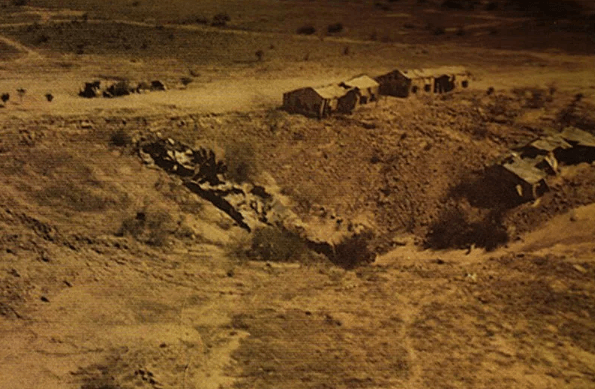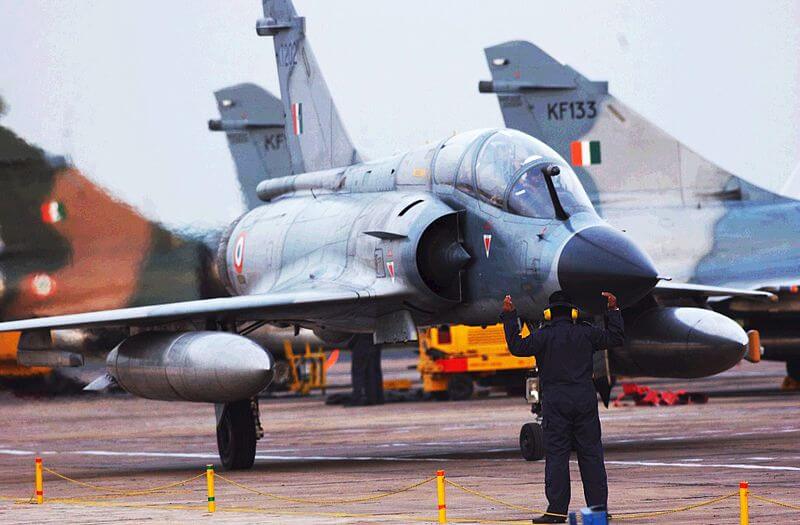
Exactly 50 years back on 18 May 1974 India had detonated the nuclear device as part of Operation Smiling Buddha famously known as Pokhran-I. Operation Smiling Buddha, was India’s first nuclear explosion which was described as a peaceful nuclear explosion. Peaceful nuclear explosions (PNEs) are nuclear explosions for non-military purposes. The nuclear yield of the test was around 8 kilotons (kt). The explosive yield for the nuclear bombs dropped on Hiroshima and Nagasaki were equivalent to about 15 and 20 kt respectively.

Pokhran-I test was one of the most closely guided secrets of the Indian state. It came as a major shock to the entire world. However, PNE was not a new concept and the US and Soviet Union had conducted many such tests. While the Soviets had a very major nuclear program and during the 1970s-80s period they are known to have conducted 239 nuclear explosions.
During the 1960s and early 1970s period India had already fought three wars (1962 China war and 1965 & 1971 wars against Pakistan). It became evident for India that the security situation in the region is going to remain challenging for the foreseeable future. China had conducted its nuclear tests during 1964. Also, there was a realisation that there was a great amount of hypocrisy in regards to the global policies on nuclear weapons. The Nuclear Nonproliferation Treaty (NPT) was conceptualised and with an aim to have minimal peace, this treaty was signed in 1968. By that time apart from the US, Soviets and China two other states namely France and Britain had tested their nuclear weapons. So, the treaty identified these states as the only five nuclear weapon states indirectly meaning that no other state which is signatory to NPT could ever conduct a nuclear test and possess nuclear weapons. Obviously, India argued that NPT is a discriminatory mechanism and refused to join this mechanism.

50 years ago, India entered the league of nations with nuclear capabilities. It was a very bold decision taken by the then Prime Minister Indira Gandhi to conduct PNE. It was a policy shift from the earlier regime and Pandit Nehru being a peacenik was not in favour of nuclear weapons. However, Mrs Gandhi, who was responsible for cutting Pakistan to size, was conscious of the fact that the security situation on the Pakistan and China front would always remain challenging. She was aware that as a nonaligned state, India needs to protect its own security interests. Going nuclear was an important step towards evolving India’s overall security architecture. Subsequently, during 1998 India conducted a series of five nuclear weapon tests under Operation Shakti (Pokhran-II).
Also Read: The Scientists behind the success of Operation Smiling Buddha
In 1978, the US came out with the Nuclear Non-Proliferation Act and stopped any nuclear assistance to India. Actually, owing to India’s nuclear policies India was put under the technology restrictions by various western countries. India’s strategic sector suffered significantly almost for a period of three to four decades since no international technology collaboration was happening. This period is famously known as the period of Technological Apartheid. Along with military programs, India’s space program also suffered significantly owing to this technological apartheid. During 1991, the Clinton administration in the US had forced Russia from transferring the cryogenic engine technology to ISRO. However, at present owing to the historic Indo-US Nuclear Agreement of 2005-2008, India is no longer under any technology restrictions. Today, along with the US, other western countries are also cooperating with DRDO and ISRO.

During the last 50 years, India has come a long way towards establishing its nuclear weapons program. As per some estimates, at present, India could be having around 170 nuclear weapons in its arsenal. This process of weaponization is a complicated engineering activity and involves various activities from deciding on the yield necessity, device design, and material acquisition and processing and many other processes. The positive aspect of India being under technology sanctions was that it forced India’s scientific community to indigenize. Today, India can say proudly that its entire nuclear weapons edifice is developed by India’s scientific community.
Only having nuclear weapons is not sufficient, when a country wants to establish a potent nuclear deterrence mechanism. What is important is to have a reliable nuclear weapon delivery system. The warhead would be essentially designed based on the weapon system, which ultimately would deliver the nuclear munitions on the target. Alternatively, the modern-day warheads are compressed in size and hence in a position to offer different options for the delivery systems too.

Basically, all such warheads could be delivered from ground, aerial or submarine-based platforms. Together this system of various delivery mechanisms is known as a nuclear triad. Today, India has a very powerful missile structure involving missiles from the Prithvi and Agni Series, which are capable of delivering weapons on any targets in Pakistan and China. The Indian Air Force has specific fighter aircrafts which can carry the nuclear payload. Also, Sagarika K-15 nuclear tipped missile could be fired from the Arihant Submarine.

Today, while celebrating the five decades of India’s entry into the field of nuclear weaponry, it is important not to lose the site of the efforts of the scientific community towards the conduct of Pokhran-I. It was a team of about 75 scientists and engineers at the Bhabha Atomic Research Center (BARC) and other agencies, which were involved towards taking this project to a logical conclusion. The team was headed by Dr Raja Ramanna. The other senior scientists involved in this project were Homi Sethna and Basanti Dulal Nagchaudhuri. Currently, India has a very strong and effective nuclear deterrence structure and a major credit for that should be given to India’s scientist community, which works tirelessly behind the screen.
The views expressed are personal and do not necessarily reflect those of the Manohar Parrikar Institute for Defence Studies and Analyses (MP-IDSA)

